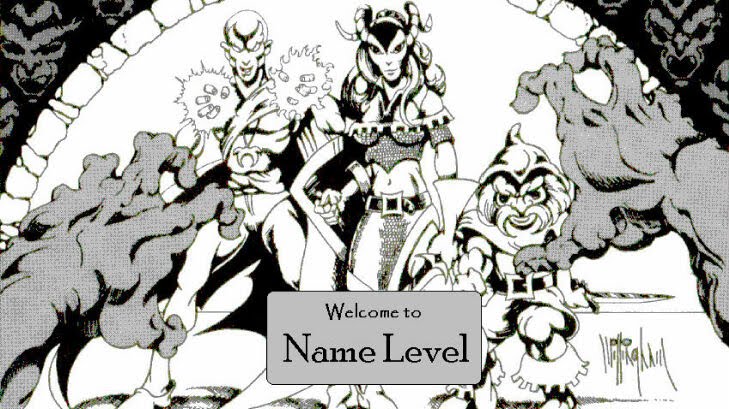You read all over the blogosphere about various takes, explanations, and rules on Hit Points and dying. I should include several links to demonstrate, but I'm far too lazy at this time of day.
Hit Points, in all their abstract forms, are a measure of one thing only: how much or often can you get hit before you're out of a fight. In fact, thinking of HP as a measure of the "size of the fight in the dog" would be far more accurate. This would eliminate the whole "dead at zero" or "dead at -X HP" nonsense.
Consider the battlefield movies you've seen where piles of soldiers lie bleeding and dying, but still alive. They're not able to fight anymore, but they certainly aren't dead. Once you hit zero HP, you're down but not necessarily dead. In mass combat, you're better off taking down your enemies, not stopping to finishing each of them off, hence the scene above. You COULD finish off anyone in that condition if only you weren't busy defending yourself from the next guy still able to hack you to bits with his sword.
How long it takes a character to die while in that state could be decided my their CON score, but actively trying to kill them should be immediate with no damage roll needed.
Why? The answer is hidden in plain sight in every version of the Basic rules, in the Sleep spell description.
From Moldvay (B17):
- " A sleeping creature may be killed (regardless of its hit points) with a single blow with any edged weapon. "
By extension, you could say any creature that was so incapacitated by being paralyzed, bound, Held, or even naturally asleep (the scene at the Inn in the Fellowship of the Rings?), would also be subject to the same fate.
In my games, then, I'd translate this as follows:
Any single blow that takes you to zero or fewer HP, takes the fight out of you and, more importantly, takes you out of the fight. In this condition, you can be slain with any single intensional blow from an edged weapon. If that single blow took you lower than HALF your CON, you will also die in a number of rounds equal to your CON score unless medical attention or magical healing is applied. Otherwise, you'll stabilize and, with the proper care and rest, will fully recover.
However, being reduced to zero or fewer HP will leave a lasting effect on you, again unless healed by magical or Clerical means. You might end up with a limp, a reduced STR in one arm, grotesque scars, loss of an eye or ear, etc. For Hirelings and the rank-and-file troops, this adds character and flavor.
But, heroes (the PCs), having access to magical and Clerical healing, will normally be free of such worries. This is why characters like Conan and the Grey Mouser, though occasionally sporting a stylish scar or such, are generally free from crippling or debilitating battle wounds.
This also works with "normal men" and 1st Level characters. How many times have you seen, in real life, or in a comics and the movies, where someone's taken out with a single pop to the nose? Classic example of a character with low HP. You can knock someone with an average CON on their ass ("taking them out of the fight") without coming close to killing them. That's a big justification for Wizards and other overly "civilized" folks only having 1d4 Hit Points. It also explains why, even at 1st Level, a character who got even a slightly higher-than-average HD roll is a big deal; you ain't gonna take them out with a single punch or blow.
I want to further expand on this but it's gone on far longer than I'd intended. I'm starting to sound alot like JB. ;)
